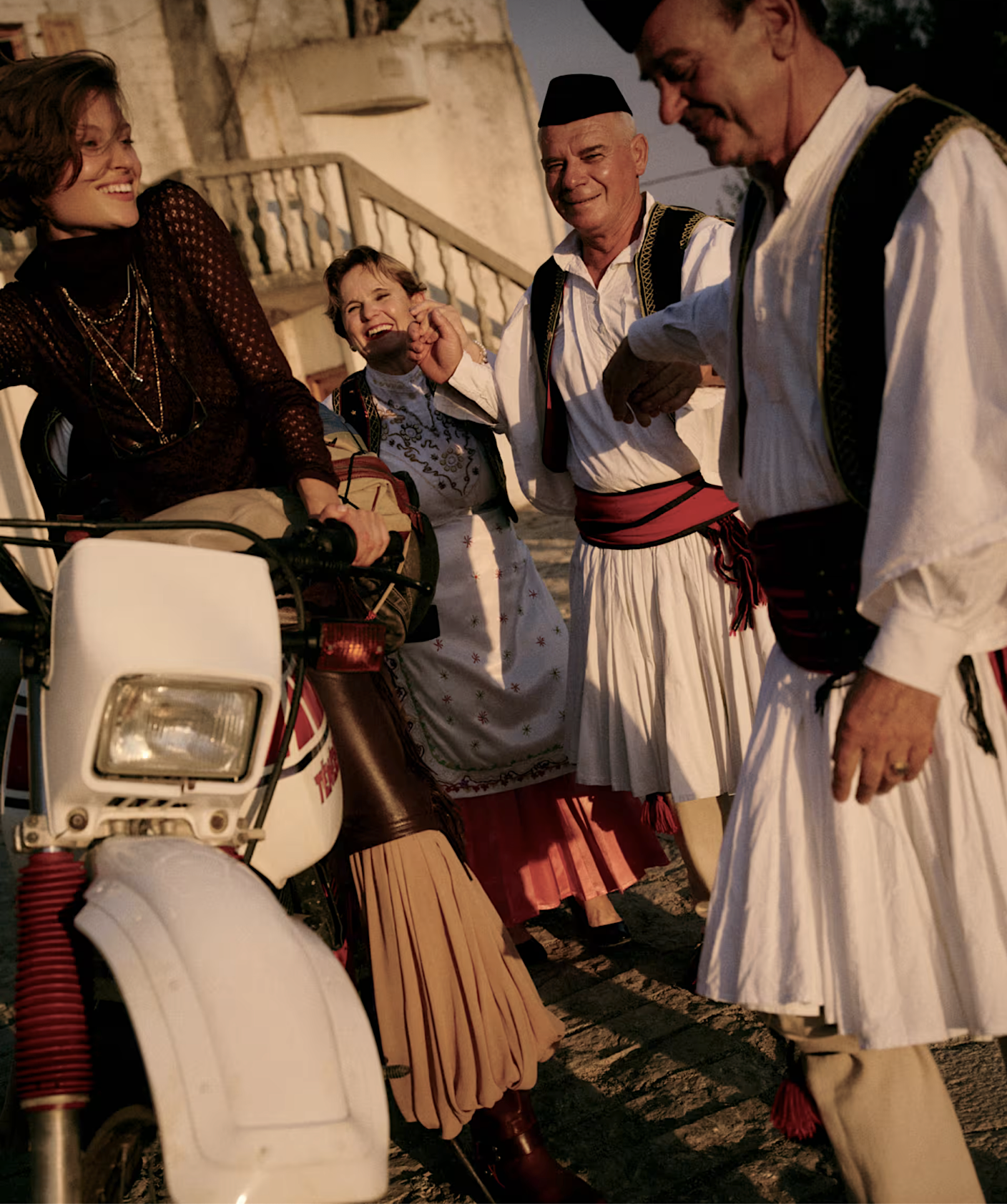Bibi Breslin in Albania for 'Road Runner' by Josh Olins for WSJ Magazine October 2024
/Bibi Breslin in Albania for 'Road Runner' by Josh Olins for WSJ Magazine October 2024 AOC Fashion
Model Bibi Breslin moves from the coterie of October cover models in the new Harper’s Bazaar Italia 14 to the October pages of WSJ Magazine. See all the images with brand details at WSJ,
Breslin is on location in Albania for ‘Road Runner’, motorcycle style fashioned by Anastasia Barbieri in Bottega Veneta, Coach, Celine, Chloé, Dior, EgonLab, Emporio Armani, Giorgio Armani, Gucci, Hermés, Hereu boots, Isabel Marant, Lemaire, Loewe, Loro Piana, Louis Vuitton, Maison Margiela, Marko Helmets, Michael Kors Collection, Miu Miu, Paris Texas boots, Pendleton, Polo Ralph Lauren, Prada, Tatras-Official, The Row, Torc Helmets, Ulla Johnson ,
Josh Olins [IG] photographs the ‘on the road’ fashion story and AOC inquires about ancient Albania. / Hair by Cim Mahony; makeup by Satoko Watanabe
Albania: In the lands of the Illyrians
The ancient history of what is now Albania is intrinsically linked to the Illyrians, a group of tribes who inhabited the western Balkans. They emerged as a distinct cultural and political force in the region around the 7th century BCE. Over time, the Illyrians occupied a vast area along the Adriatic coast, extending inland to parts of the modern-day Balkans, exhibiting a diverse range of tribes such as the Taulantii, the Parthini, and the Dardanians.
Their influence was largely shaped by their strategic location, which facilitated extensive trade and interaction with neighboring civilizations, including the Greeks, Etruscans, and later the Romans.
Renowned for their warrior culture, the Illyrians were instrumental in numerous military campaigns, both as adversaries and as allies. They established several kingdoms, most notably under the reign of King Bardylis and later Queen Teuta, who fiercely resisted Roman expansion. The Illyrians' seafaring prowess also granted them control over crucial maritime routes in the Adriatic Sea, which were key to their economy.
Despite their military strength, internal conflicts and the steady expansion of the Roman Empire led to their eventual decline. By the 2nd century BCE, the Romans had largely subdued the Illyrian territories, incorporating them into the province of Illyricum, marking the end of their independent influence in the region.


